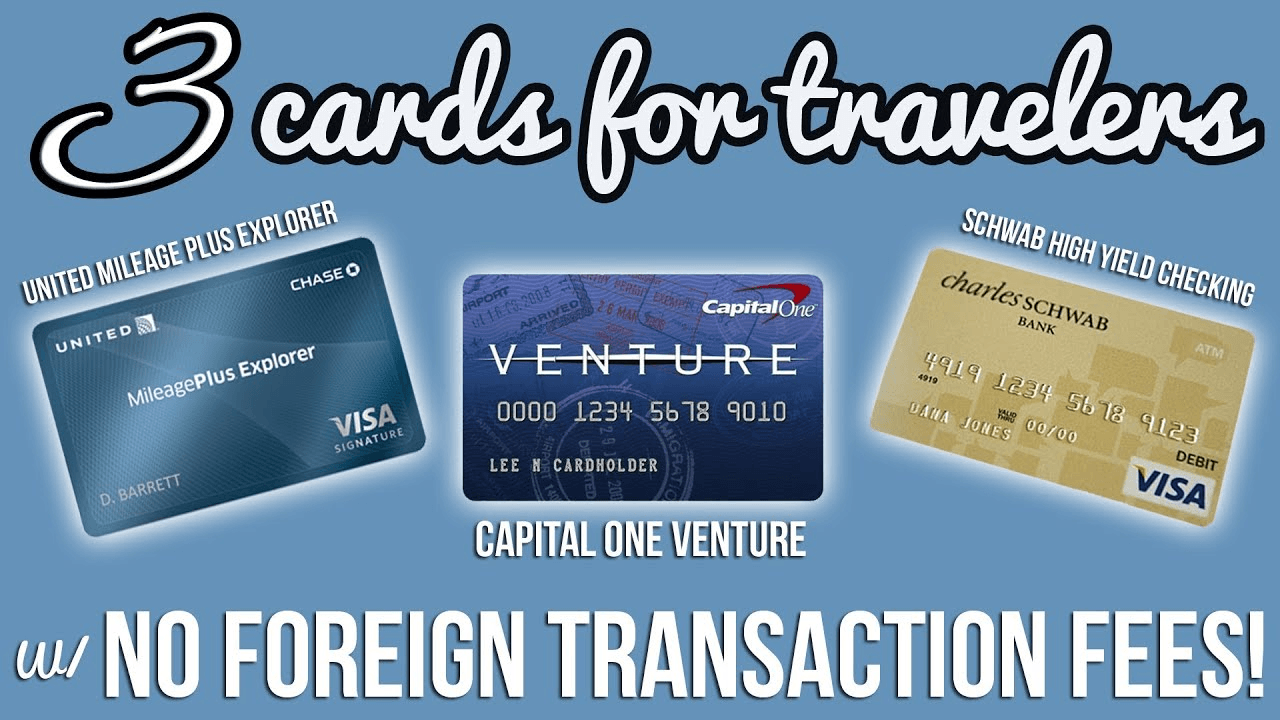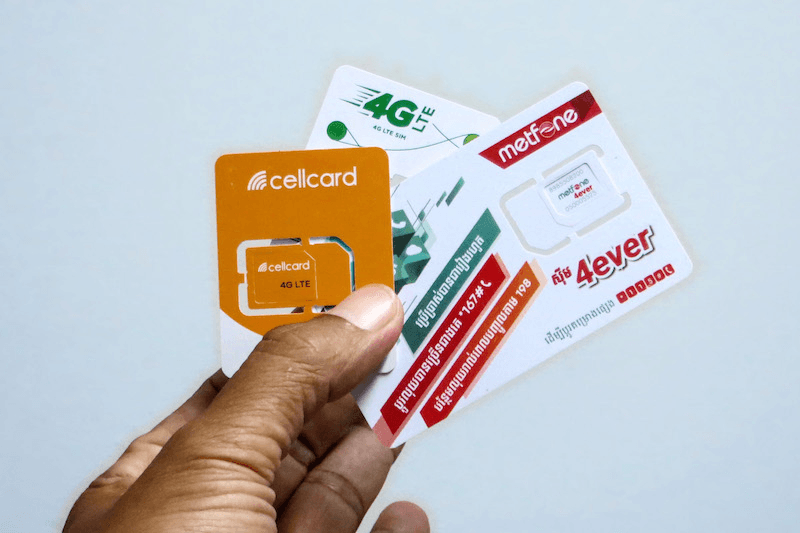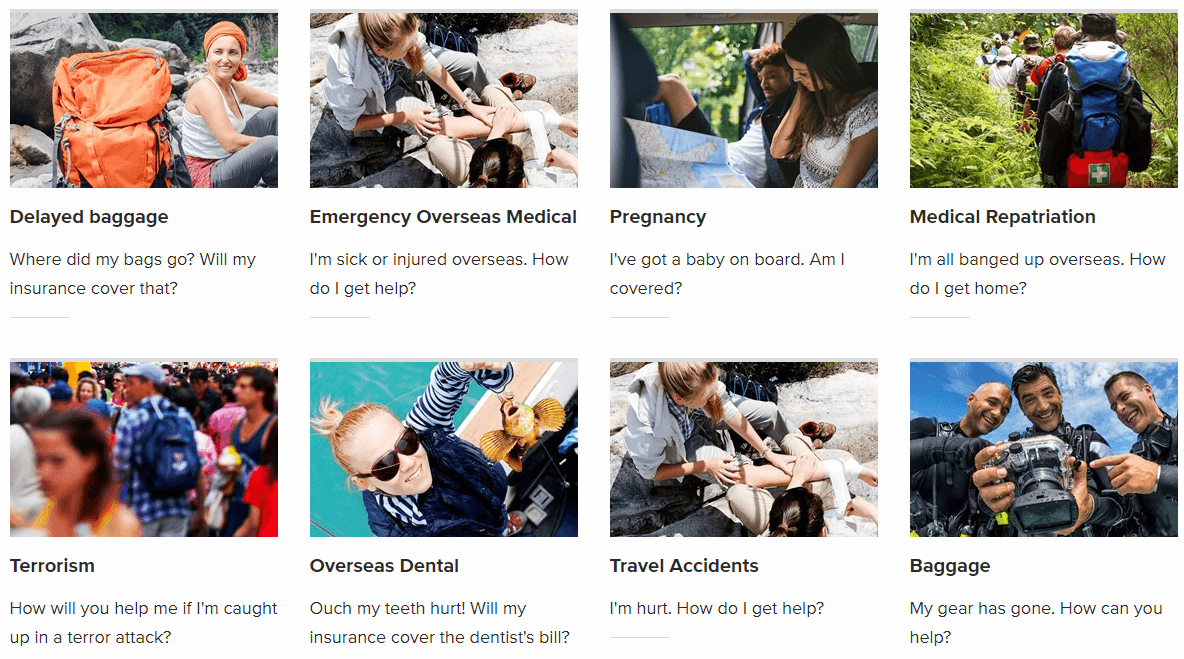Every person reading this title will be in a different position. For someone who already works online or has already taken dozens of vacations around the world, learning how to prepare to be a digital nomad might be pretty simple.
On the other hand, many digital nomad dreamers are starting from scratch, with no remote work or travel experience.
If you’re more in the latter category, it’ll take some extra hustle to get to a comfortable flow.
But the good news is that with a little – or a lot – of research, strategy, and elbow grease, the lifestyle is waiting for you if you really want it.
Take it from Christopher Mitchell of Traveling Mitch. He’s lived on four continents and visited more than 80 countries, and he believes that it’s more possible than ever to build a life on your own terms.

Christopher Mitchell, Founder of Traveling Mitch |
| “While I’m admittedly biased, I feel strongly that within each of us there is a great desire to move and explore for exploration’s sake.
What impeded this exploration in the past was the notion that we could only travel when we weren’t working, and buried under mounds of paperwork. That’s all changed, and now you can ditch the 9-to-5 and be more productive than ever. To thrive in this space takes discipline, creativity, and hard work, but if you continue to grow, learn, and hustle each day, you’ll find that you’ve created a life that suits you perfectly – which makes sense since you created it.” |
But before you kiss your current lifestyle goodbye, there are some key considerations that you should start planning for as soon as possible. Apart from establishing your nomadic income stream, you’ll need to handle some logistics to help you cruise smoothly from country to country.
You’ll also need to make arrangements in your current lifestyle, like optimizing your banking and selling, storing, or ditching all the stuff you can’t fit into your backpack or suitcase.
And perhaps one of the most important items for the longevity of your nomad life is to make sure you’re in the right place mentally.
In this blog post, we’ll talk about how to become a digital nomad and go over four tips to add to your moving abroad checklist:
- Make your job preparations
- Sort through (and let go of) your stuff
- Prepare to go international
- Check your mindset
Let’s go.

Don’t wait for someone else to do it. Hire yourself and start calling the shots.
Get Started Free1. Make Your Job Preparations
Unfortunately, most of us don’t have a trust fund that allows us to quit our jobs to travel – which means that you’ll need to figure out how to generate your own income.
This is the most intimidating part of the process for most people. And sadly, it’s one of the biggest roadblocks that stop dreamers from making the leap.
While some people already have a job that lets them work from home, or a cool company that helps them make the switch to remote work, many people just don’t have that luxury.
If you have a hunch that your current job might be open to facilitating your travels, try asking your boss.
But if this isn’t an option and you have to quit your job to travel, you’ll just have to create your own revenue stream.
I’m going to be honest: learning how to start a digital nomad career from scratch can get difficult. But the odds of this working for you are growing by the day, as one study estimated that the majority of U.S. workers are poised to become freelancers by 2027. And this number will naturally grow around the rest of the world too.
Some aspiring digital nomads choose to start a ‘side hustle’ as they build their own business alongside their current 9-to-5 or part-time job.
As I mentioned in my previous post on digital nomad jobs, this might include things like starting a dropshipping business, becoming a social media marketer, creating online courses, or doing freelance graphic design – just to name a few of the hundreds of ways you could generate income online.
The side hustle approach will guarantee that you keep a consistent income flow while you steadily build your digital nomad salary. This can give you some leeway while you navigate the uncertainty of finding a solid new revenue source and learn how to become a digital nomad.
That’s why I strongly recommend this route, especially if your finances are a major concern for making the switch.
But make sure you go into it with a resilient, resourceful, and patient attitude, as it can almost double your workload, and it might take a little while for you to pick up steam.
As with any new professional venture, you’ll benefit big time when you accept that challenges – and occasionally failure – are just part of the deal.
2. Sort Through (And Let Go Of) Your Stuff
Calling all hoarders: you’re gonna have to work on that.
When you think about every digital nomad you’ve ever seen, they all have at least a few things in common. One of those things is a noticeable lack of belongings.
Many nomads are backpackers, slinging their entire lives onto their shoulders whenever it’s time to hit the next destination.

While some people are blessed with the gift of not being too attached to their stuff, it’s an understandably difficult process for many others. After all, we’re emotional creatures and our stuff can hold a lot of sentimental value.
In addition to the psychological obstacles, you might also encounter some logistical ones.
What will you do with all the stuff you’re not taking? There are a few options:
- Sell them in a garage sale or online, like Craigslist, Facebook Marketplace, or even Amazon or eBay.
- Get a storage unit for maybe six months or a year with the option of extending if you decide to stay out longer.
- Keep them with a close friend or family member who has some extra space and wouldn’t mind holding onto them.
Selling your stuff can actually be a win-win, as it can double as more cash to pay off some debt or contribute to your emergency fund.
At first, you might have no idea what should stay and what should go. Start with the bigger ticket items and the items that are collecting dust. Ask yourself: have I used this in the past month? Do I really need it?
Try easing yourself into the process by doing a ‘dry run’ right now.
You can even pack a mock suitcase and try living off only those items for a while. The act of physically packing the suitcase will give you the opportunity to go through your stuff and critically think about how much you value and use each item.
And it will make you more mindful of how you actually use them from day to day.
If you try this for at least a couple of weeks, you’ll have a much better idea of what should stay and what should go.
Here are some other things to think about:
- If you have a car, you might want to sell it or rent it out to a friend or family member.
- If you have a home or apartment lease, you can try negotiating with your landlord to shorten your terms.
- Alternatively, you can try renting out the space on a website like Airbnb. Keep in mind that you probably need someone to help manage it while you’re gone, unless you find a long-term renter.
Generally speaking, it’s probably not a good idea to get rid of everything you own before you’re certain that nomad life works for you. Try to find a balance that doesn’t put you in a pickle down the road.
3. Prepare to Go International
When you leave your homeland to master how to be a digital nomad, there are a handful of issues that you might not even realize there are issues until they bite you in the bum. These include things like making sure you can easily access your money or that you have the right type of phone to use in other countries.
Optimize Your Access to Money
Watch out for foreign withdrawal and transaction fees. Call your bank and ask what their fees are for international withdrawals. Depending on the answer, you might want to consider getting a different bank with smaller or no fees.
If you find that you’ll be paid in a different currency and your bank charges an arm and a leg to convert it, you might also want to get an international bank account.
Call your credit card companies too to see their foreign transaction transactions. There are plenty of cards with no fees if yours are too steep. And if you need a new card, try something that gives perks like travel points or cash back.
U.S. citizens can check out cards like the United Mileage Plus Explorer, Capital One Venture, and Schwab High Yield Checking.
Tell them you’re traveling. Before you ship out, it’s a good idea to call your bank and credit card companies to let them know where you’re traveling. Otherwise, your account or card may get frozen from ‘suspicious activity’ flagged by their automated fraud detection systems.
Consider a money transfer service. Alternatively, a service like TransferWise is a favorite of many digital nomads. It offers low transfer and conversion fees, catering to people who send and spend money abroad and get paid in different currencies. They also offer a debit Mastercard.
And surely you’ve heard of PayPal, which also offers a debit Mastercard. While PayPal is massively successful – and a good option in its own right – you’ll likely encounter higher fees for converting currency and sending and receiving money.
Have a backup plan. Part of learning how to be a successful digital nomad is to always have a backup plan. For example, say that your only debit card gets lost or stolen.
How will you access your cash? Will your bank send you a new card internationally? If it won’t, is there a friend or family member back home who you can have it delivered to, then they can mail it to you?
If you’re in a bind, there are services like Western Union and other local options that allow you to send yourself cash that you can pick up from a physical location, like a Western Union office or a local grocery store in certain cities.
There’s no ‘right’ way to prepare for a situation like this. But in general, you might benefit from having two bank accounts and two credit cards, so that you’re not completely stranded if something happens to the first.
Sort out Your Phone Situation
Does your current carrier have good international options? For example, T-Mobile in the U.S. offers free unlimited 2G data and texting in more than 210 countries.
While a 2G connection won’t be as fast as today’s standard 4G connection, it does the job well enough in between your wifi connections. And it can be a lifesaver when you touch down in a place you’ve never been, only to discover that all of the airport’s local SIM card stands are closed for the day.
With many carriers, you can suspend your phone line for up to a few months and pay a small fee like $10 per month instead of your full-service bill. This way, you don’t have to lose your phone number by completely cancelling your service.
Once you suspend or cancel your phone, you can just pop in a local SIM card to have data in between wifi spots in each city you visit. This will keep you connected so you don’t have to worry about emergencies.
If you’re interested in learning more, check out this detailed guide on how to buy local SIM cards around the world.
To make sure your phone is compatible with a local SIM card, it should cover two bases:
- It’s unlocked. Many phone companies will sell you a locked phone, which means that it’s restricted to only give you service from that carrier or in a certain country. If you’re buying a new phone, you can buy one that’s unlocked. Or you can call your phone carrier and ask them to unlock your current phone, which is usually a fairly simple process.
- It’s GSM. This is mainly an issue with U.S. phones. There are two main radio technologies that smartphones use to connect to the world: CDMA (Code Division Multiple Access) and GSM (Global System for Mobiles). While there are a few U.S. carriers that still use CDMA, namely Sprint and Verizon, other U.S. carriers and most of the world uses GSM. That’s why using a GSM phone will minimize potential complications with using international SIM cards.
If you need to make international calls, you can likely get a SIM card package that includes them. But that can get real pricy real quick.
Check out cheap internet-based calling services like Skype or Google Voice. If you need to have frequent conference calls with clients, try a service like Zoom, Webex, and Join.me, that can connect audio via the internet or traditional phone line.
Be Proactive With Your Healthcare
Consider travel or nomad insurance. Traditional travel insurance can get murky for a digital nomad who’s constantly on the move. Fortunately, companies like World Nomads specialize in this kind of situation. They offer flexible plans that cover certain places and activities, and you have the option to extend your coverage to keep traveling.
You can also get coverage for your belongings, like lost or delayed baggage from travel, or if any of your stuff is stolen.
Get your checkups. If you currently have insurance and trusted healthcare providers like a family doctor or dentist, get your regular checkups and cleanings before you leave home. If you have medication prescriptions, see if you can stock up, and research your options for getting refills on the road.
While travel insurance is great for emergencies, it’s more difficult to get coverage for routine services. Plus, the overall quality and availability of healthcare will vary depending on where you’re going. Best to cover your bases at home.
Go paperless
If you currently get important bills, notices, and other communications via snail mail, contact all of these companies and ask to receive them via email. If you need the paper copies, have the mail forwarded to someone who can safeguard them for you while you’re away.
4. Check Your Mindset
Embrace uncertainty. You’ve probably heard those cheesy, clichéd motivational quotes that try to pep talk you into facing your fears. Like: ‘Everything you’ve ever wanted is on the other side of fear,’ or ‘Fear is temporary. Regret is forever.’
These sayings are worn out for a reason. They speak to a fundamental truth about how our fear of the unknown and resistance to change can make us stagnant – and sometimes miserable. Uncertainty can be scary, especially when we grow up in societies that glorify stability and coloring inside the lines.
Learning how to live as a digital nomad really takes courage and boldness – and embracing the uncertainty that comes with every new place. While it’s 1,000% normal to feel hesitant about a radical life change, successful nomads are able to take these emotions and turn them into fuel.

Try not to make comparisons. ‘Culture shock’ is inevitable for those who haven’t done much traveling. If you haven’t been outside of your home country too often, you’ll learn this fast.
One of the reasons that culture shock can be so shocking is our natural tendency to make comparisons. When you’re only used to one way of life, drastically different ones will stick out like a sore thumb, often making you feel alienated and homesick.
But in the long run, making comparisons will put a damper on your experiences. Instead of looking at different cultures and lifestyles through the lens of your homeland, it’s better to go straight into it with an open and accepting mind.
The sooner you accept that you’re not in Kansas anymore, the easier it will be for you to adapt and assimilate to new cultures. And when you’re in their home, you need to play by their rules. You’ll also find that this mentality will help you be a more respectful visitor, and an overall better global citizen.
Nurture your mental health. When you browse through blogs and websites about how to become a digital nomad, there’s a heavy focus on all the glamor of being a nomad. But what they don’t tell you is that it can cause significant strain on your mental health.
You’ll get stressed and anxious when things go wrong. You’ll get lonely if you’re moving around a lot. You’ll get burnt out from blurred lines in your work-life balance.
It’s critical that you take care of yourself, especially if you already struggle with issues like depression, anxiety, or other conditions that impact your mental health. While a nomadic lifestyle provides a physical reprieve from a lot of the daily stresses you might experience now, it can actually exacerbate some of these conditions if they’re left unchecked in the long run.
If you work with a therapist or other mental health professional, ask if they’re willing to hold sessions via Skype instead. You can also look into online services like Better Help, Talkspace, or Breakthrough.
Now that you have some tips for how to become a digital nomad, wait for my blog post where I teach you how to research your first destination.
Keep Reading: How to Choose Your First Destination →
Table of Contents
Chapter 1: Is a Digital Nomad Lifestyle Right for You?
Chapter 2: Work Anywhere With These Digital Nomad Jobs
Chapter 3: How to Become a Digital Nomad: 4 Tips To Prepare
Chapter 4: How to Choose Your First Destination
Chapter 5: Travel Budget Tips for the Aspiring Digital Nomad
Chapter 6: Tapping Into the Digital Nomad Community










